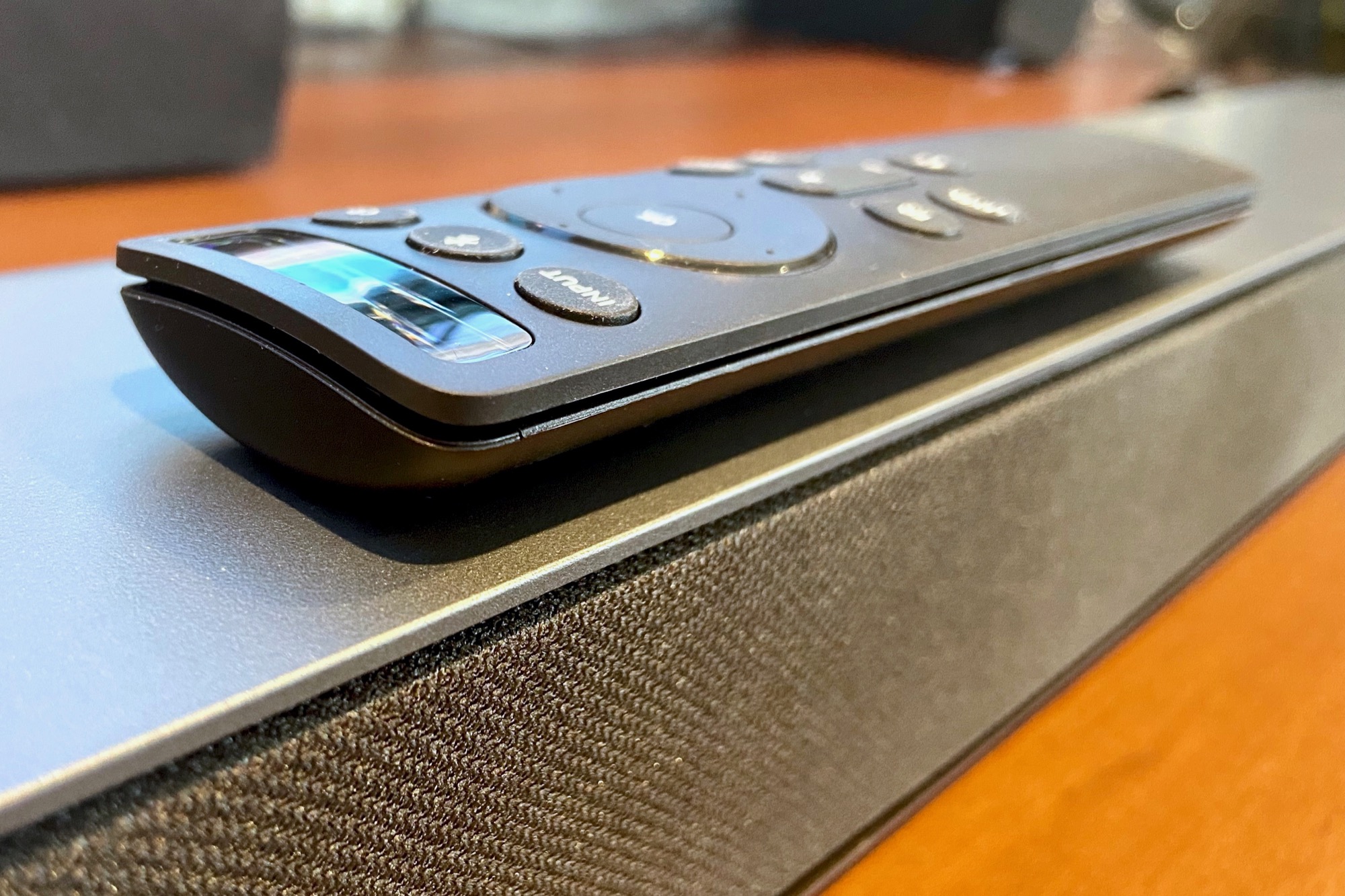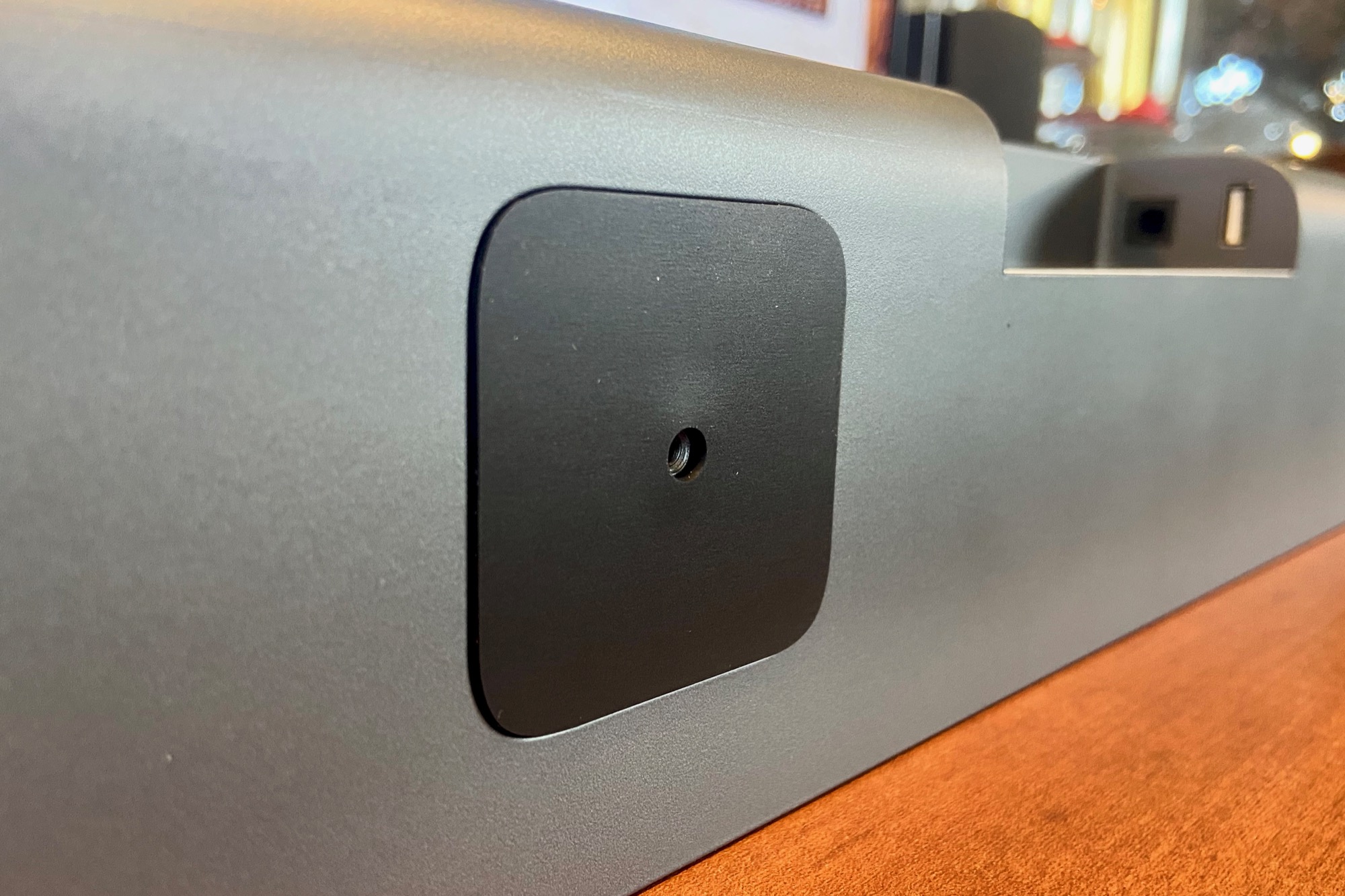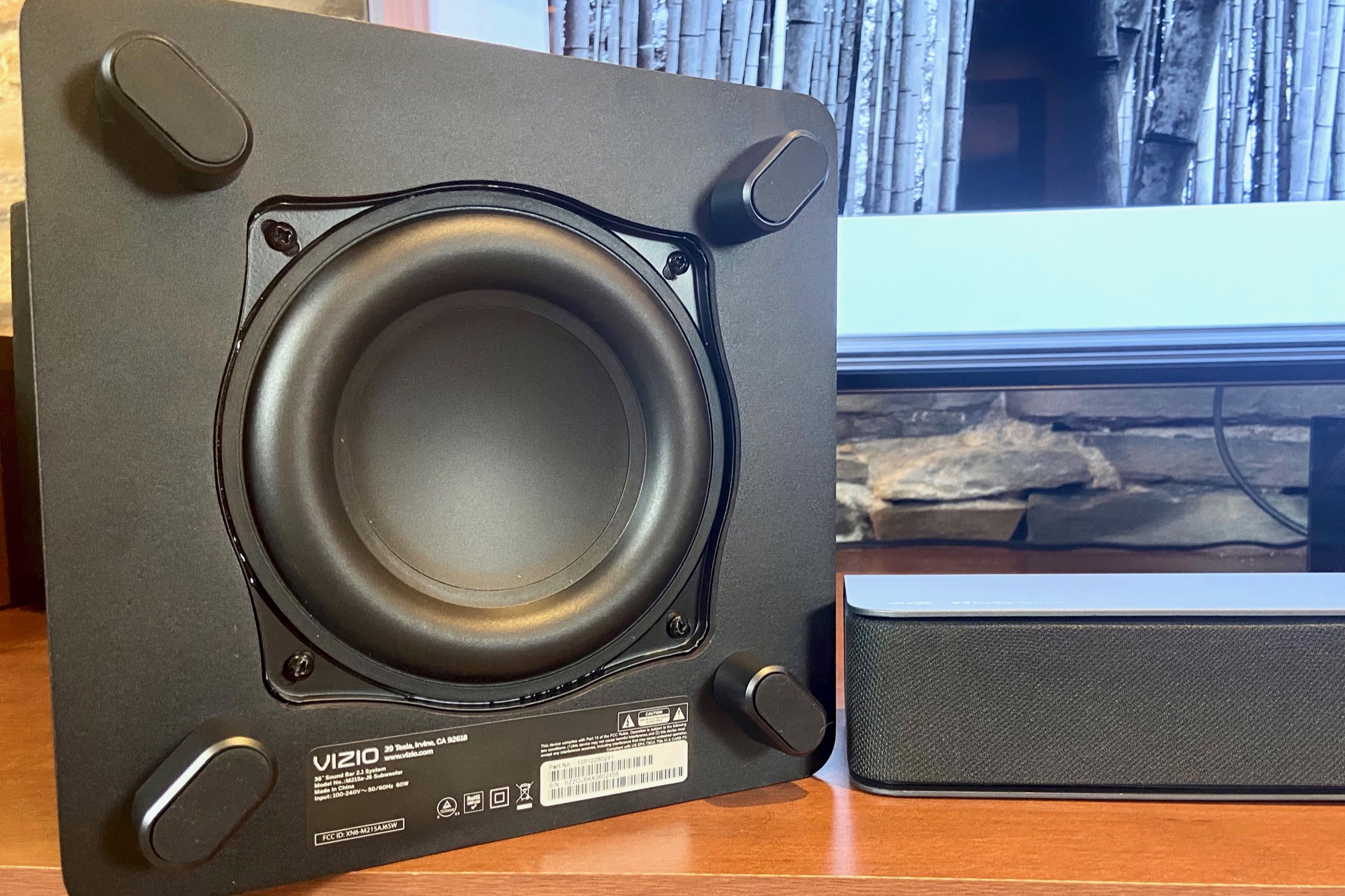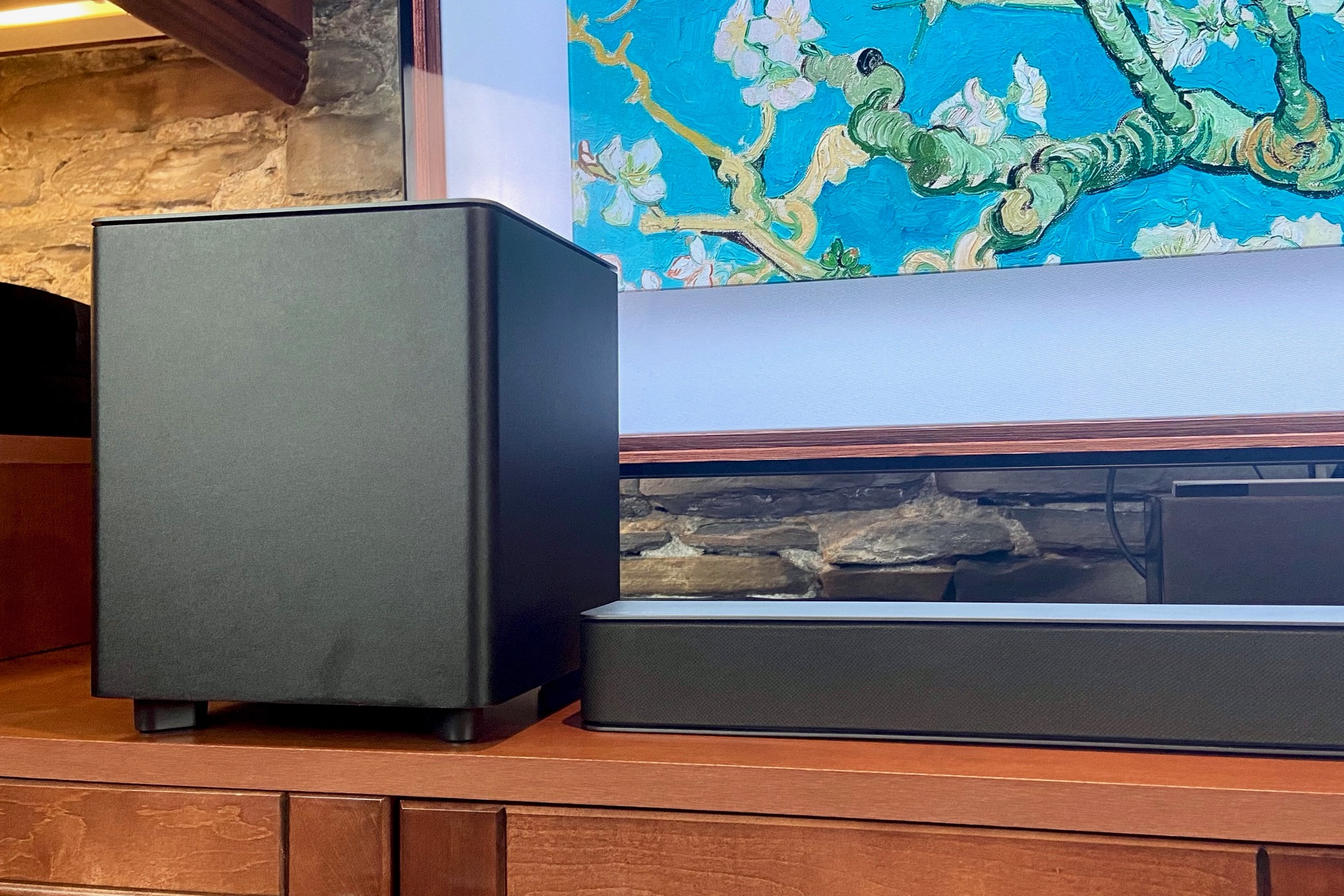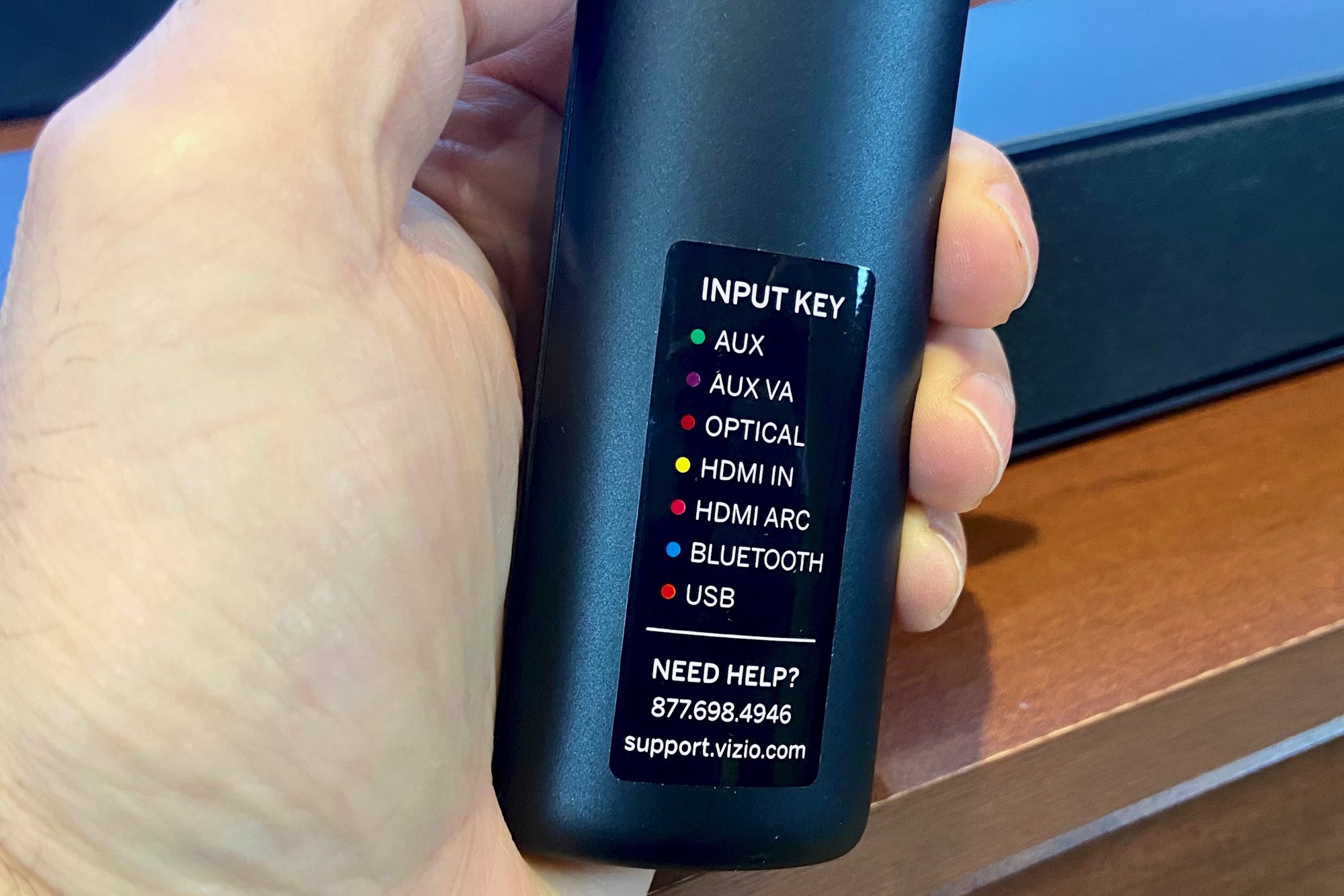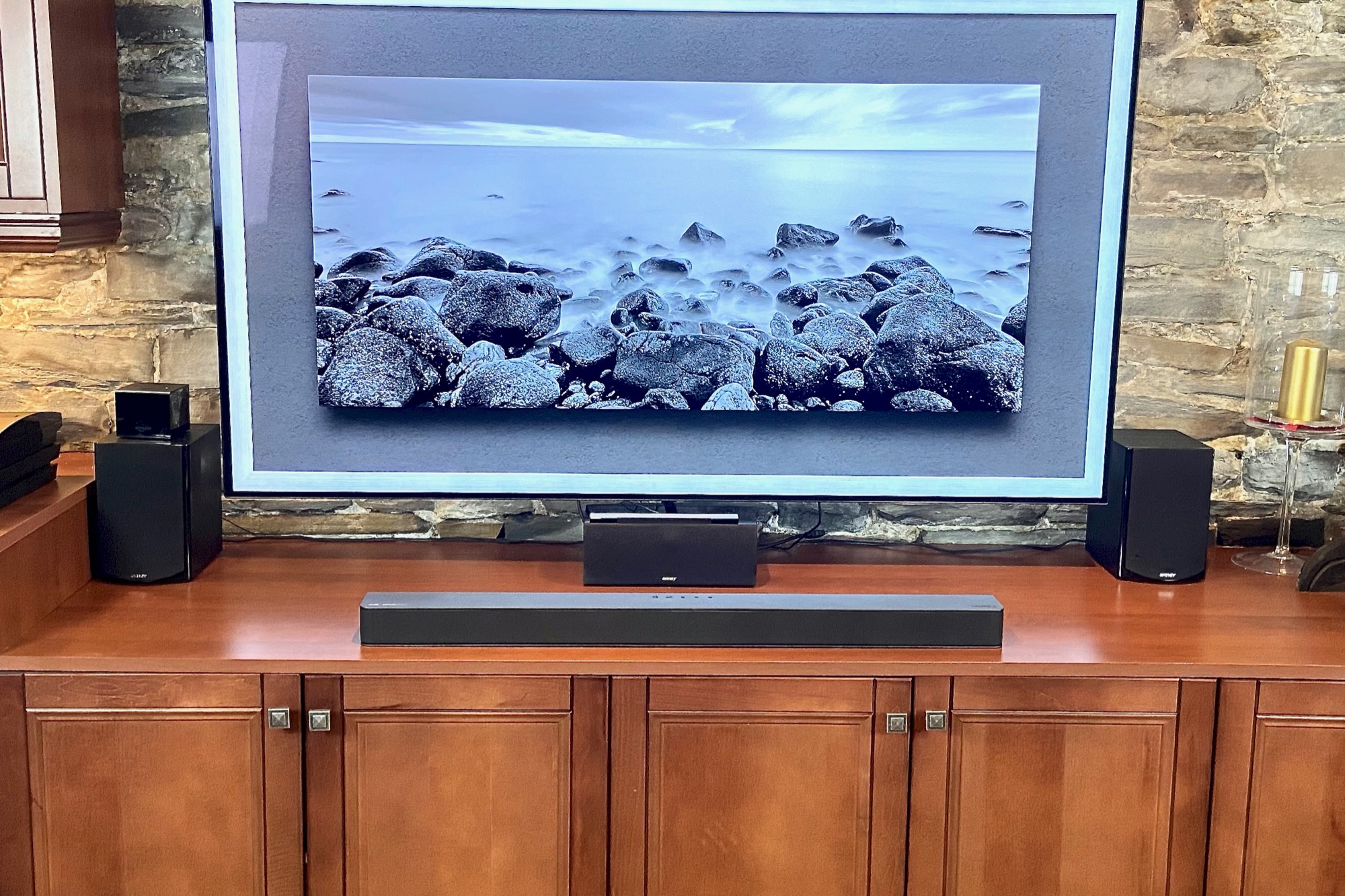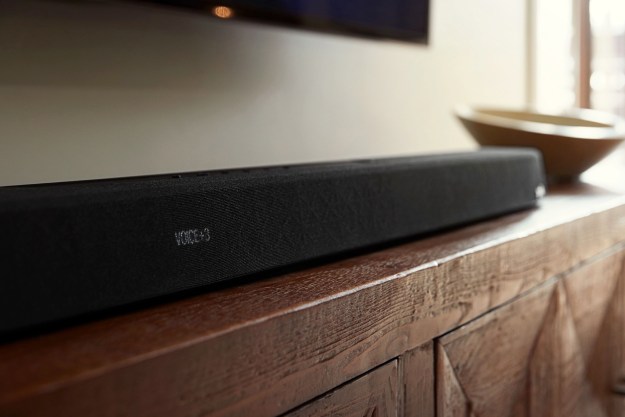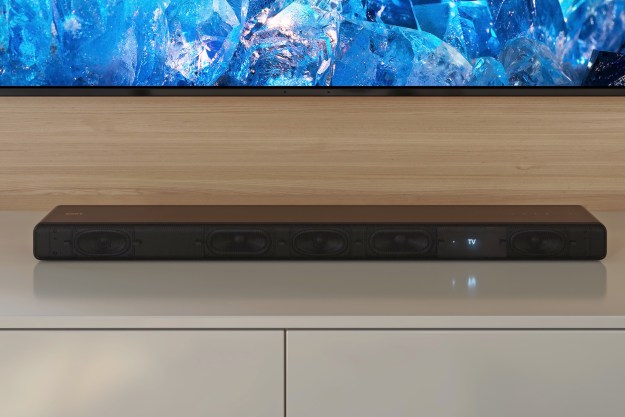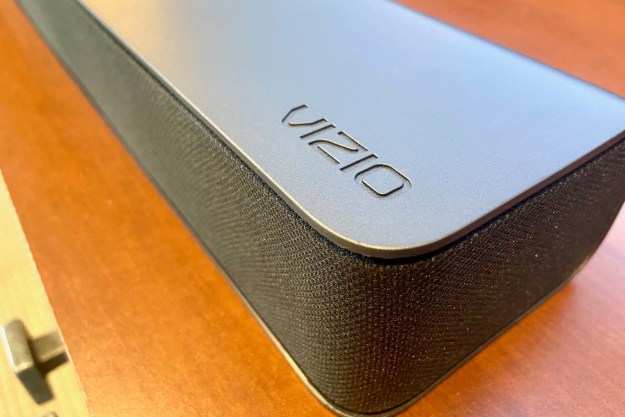
“The Vizio M-Series 2.1 (M215a-J6) is one of the best dollar-for-dollar investments you can make in better TV sound.”
- Great price
- Good assortment of inputs
- Easy setup
- Very good sound quality
- Dolby Atmos and DTS:X
- No Wi-Fi/AirPlay/Chromecast
- Only 2.1 channels
- Missing some midrange detail
Why buy a soundbar? It’s simple: You have a TV — possibly even a really great TV — but it still produces lackluster sound. Perhaps the dialogue is hard to make out. Or maybe the bass is insufficient to make your favorite movies come alive. Or perhaps you’ve been reading about surround sound formats like Dolby Atmos and DTS:X and you want to experience them for yourself. If any of these (or all three) are the case, you should consider buying a Dolby Atmos soundbar. And if you’re on a limited budget, you should consider buying the $178 Vizio M-Series 2.1 (M215a-J6). It scratches all of those itches without forcing you to become an audio/video expert, run wires all over your TV room, or splurge on a $1,000-plus sound system. Are there any catches? Let’s find out.
Design

In addition to being generally superb value for money, Vizio soundbars tend to be understated affairs with very plain, matte black plastic finishes and equally low-key acoustic fabric grilles. The Vizio M-Series 2.1 (M215a-J6) — which for simplicity’s sake I’ll call the M215a from here on in — is no exception.
If you believe that soundbars should be heard, not seen, the M215a is as stealthy as it gets.
You get a 36-inch long soundbar that stands 2.24-inches tall (easily narrow and short enough to sit below the bottom of most flat-screen TVs) and a tiny wireless subwoofer. With a 5-inch driver embedded in a cabinet that measures roughly 9-inches cubed, the sub is adorably small, and you can place it almost anywhere.
Even the top-mounted physical buttons on the soundbar are discreet: Tiny, raised-plastic icons that call no attention to themselves at all. If you have a taste for gorgeous design or speakers that double as conversation starters, you should look elsewhere. But if you’re like me, and you believe that soundbars should be heard, not seen, the M215a is as stealthy as it gets.
Want to wall-mount it? Vizio includes two brackets that let the soundbar sit flush to the wall. Your biggest challenge will be figuring out how to route the cables so they’re not an eyesore.
Connections
The Vizio M215a isn’t big on connection options, but neither does it skimp on them. You get an HDMI ARC/eARC port as the preferred connection to a TV (you’ll need to use this if you want Dolby Atmos or DTS:X) and there’s an HDMI input too — helpful if your TV is now shy on HDMI ports of its own.
That HDMI input can passthrough almost anything you can throw at it: 4K, HDR10, Dolby Vision? Check, check, check. The only thing it doesn’t support is variable refresh rate (VRR) or 4K @ 120Hz, so if you’re a gamer, connect your PC or console directly to your TV.
You can connect your TV to the optical port instead, or you can use that port as a secondary input for a CD player or any other device that has an optical output, like a Sonos Port, which is great. Quite a few soundbars treat their optical inputs as TV inputs, which means they can’t act as their own discrete input, separate from HDMI ARC.
It’s a breeze to get going with the M215a.
You’ll find HDMI and optical cables in the box, which will save you from having to buy or dig one out of your cable collection.
There are two auxiliary ports — one for regular analog stereo signals and one that’s dedicated to smart speakers. If you plug an Amazon Echo or Google Nest mini into this jack, the soundbar can automatically drop the volume of your TV show or other audio while you’re talking to your preferred voice assistant. It also acts as an input for whatever your smart speaker can play, from streaming music services to audiobooks and games.
You can connect a phone, tablet, or computer wirelessly via Bluetooth for another way to stream music, or you can go really old school with the available USB port — connect a thumb drive and the speaker will play any MP3 or WAV files you’ve saved.
An additional HDMI input would have been nice, though also shocking — multiple HDMI inputs on soundbars are exceedingly rare these days, even when you pay a lot more than $178.
Wi-Fi, on the other hand, would have been even more welcome, as would Apple’s AirPlay 2 and Chromecast built-in, but alas, none of these are included.
Setup and controls

It’s a breeze to get going with the M215a. Plug the soundbar into your TV via HDMI or optical, plug the soundbar and subwoofer into a wall outlet, and you should be in business. After a few moments, a confident-sounding male voice will let you know that the soundbar is looking for active connections and will tell you if there’s been a problem while trying to connect to the subwoofer. If all goes well, you should be able to turn on your TV and hear a much better sound than you’re used to.

But that’s just for starters. Vizio includes a remote with its own built-in, backlit LCD screen, and it’s a handy way to delve into the M215a’s deeper settings. You can choose different listening modes (movie, TV, music, game, or direct), adjust specific levels (bass, treble, subwoofer, and dialogue), and enable/disable features like DTS Virtual:X, DTS TruVolume, and night mode, which reduces dynamic sounds so you don’t wake your kids/housemates/neighbors.
If you’re upgrading from your TV’s built-in speakers, you’ll be thrilled by the M215a.
Though the screen is backlit, the buttons aren’t, so you might still need a bit of ambient light to use the remote. It can be a bit tricky with Vizio’s soundbars to know exactly what’s going on. The only visual indicator is a series of small LED dots on the left side of the grille that must be interpreted via the user manual and/or the color-key label on the back of the remote. But here’s a hint: Long press on the OK button at any time and that voice will let you know what input you’re on and what kind of signal the soundbar is receiving. For instance, when watching a Dolby Atmos movie on Disney+, it said, “HDMI ARC, Dolby Atmos, Dolby Digital Plus,” which is everything you need to confirm what’s going on.
Sound quality

If you’re upgrading from your TV’s built-in speakers, as many folks are, you’ll be thrilled by the M215a. The soundbar’s speakers project clear and precise sound, the subwoofer delivers plenty of low-end oomph, and you’ll get a genuinely expansive (if not quite immersive) soundstage for Dolby Atmos and DTS:X material, as well as standard stereo/Dolby 5.1 content via the DTS Virtual:X upscaling feature.
In fact, the DTS Virtual:X processing is so good, I recommend leaving it turned on for all of your listening activities. Don’t expect that tiny sub to rattle your windows or your teeth — it’s there to let you hear lower frequencies, not necessarily feel them.

But if you’re more intent on comparing the M215a to other Dolby Atmos-capable soundbars, you’ll need to keep a few things in mind. First, there are no up-firing drivers to bounce sound off your ceiling to your listening position. Vizio “virtualizes” these height channels, which means you will get a greater sense of height from the M215a than you will from non-Atmos systems, but it’s not going to create that sense of objects flying overhead that you’ll get from Atmos systems with dedicated height drivers.
Second, this is a 2.1 channel system, so even the center channel and surround channels are being virtualized. That’s a lot of virtualization happening, and there’s a limit to just how effective it can be. But having said all that, it’s remarkable just how “big” the M215a can sound when using DTS Virtual:X or Dolby Atmos. Especially for movies, the system can create the illusion that you’re running two very powerful speakers sitting beside your TV — not below it. This makes everything more realistic, from dialogue to sound effects.

Out of the box, I found the EQ too light on bass, but thanks to the selection of settings, I was able to easily adjust for that. Once I got everything dialed in, my go-to Dolby Atmos test scenes (from Mad Max: Fury Road, Ford v. Ferrari, and Avengers: Infinity War) sounded very good. The M215a is especially capable when it comes to dialogue enhancement, which is something of a surprise given the lack of a true center channel.
If there’s a weakness sound-wise, it’s in the midranges. Lows and highs are where you notice the biggest bang when it comes to home theater sound, but the midranges are where you get the subtleties — the extra details that let you feel truly immersed in your movies and shows – and the M215a doesn’t do quite as good a job with these frequencies as other soundbars, even after tweaking the settings.
Unless you’re in the habit of fanatically rewatching the same movies and shows, you’ll probably notice this midrange weakness most when listening to music, and it will be most noticeable when streaming over Bluetooth. For casual listening, Bluetooth is fine — the clarity is still really good — but it lacks depth. To get the most from your music, I strongly suggest using your smart TV or streaming media device to access your tunes, whether that’s through a streaming app like Apple Music, Spotify, or Amazon Music, or through a media player app like Plex.
These options will take advantage of the HDMI ARC/eARC connection, which is vastly superior to Bluetooth. Yes, that will mean you need to have your TV turned on, but it’s worth it, especially if one of your subscriptions gives you access to Dolby Atmos Music tracks.
Alternatively, you’ll get equally good results when connecting a CD player or other music playback device via the optical port.
Our take
For the price, Vizio’s M-Series 2.1 M215a-J6 soundbar offers an excellent and easy upgrade for any TV. It’s not the most immersive way to experience Dolby Atmos or DTS:X, but it’s an affordable way to bring some of that 3D audio goodness into a small to medium-sized room.
Are there better alternatives?
It’s nearly impossible to beat Vizio on price when it comes to soundbars. I’ve only found one other soundbar that comes even close: The TCL Alto 8+. I haven’t reviewed it, so I can’t speak to its sound quality, but TCL makes a good product. It’s a 3.1 channel unit with its own wireless sub. You get the center channel that the M215a is missing, and it has Wi-Fi/AirPlay 2/Chromecast built-in. But unless you can find it on sale at $150 (which Walmart is currently selling it for), it’s regular price is $279, making it quite a bit pricier than the M215a.
If you want an upgrade from the M215a, we strongly recommend its bigger brother, the $299 M-Series 5.1 M51ax-J6. It has a center channel and two surround speakers that wire into the subwoofer, which creates a much more immersive experience, while maintaining all of the ease of use and settings controls from the 215a.
How long will it last?
With no software or firmware updates needed to keep this system running, it should last for as long as you want it to. Vizio backs its soundbars with a standard one-year warranty.
Should you buy it?
Yes. At under $200, it might just be the best dollar-for-dollar investment you can make to get yourself a TV that sounds as good (or better) than it looks.
Editors' Recommendations
- Samsung launches its flagship Dolby Atmos soundbar with discounted prices
- Samsung’s flagship HW-Q990D Dolby Atmos soundbar gets Roon support
- Bose’s new flagship Dolby Atmos soundbar brings AI smarts to the dialogue problem
- Samsung adds HW-Q900C to its lineup of 2023 Dolby Atmos soundbars
- Nakamichi’s wild Dragon 11.4.6 Dolby Atmos soundbar goes up for preorder this week






